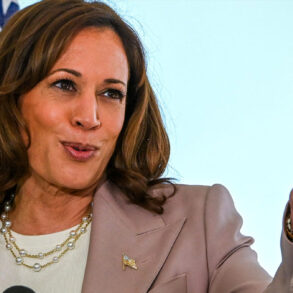In a move that sounds more like a secret society than an academic initiative, some of America’s most prestigious universities have quietly formed a private collective. Their goal is to resist the Trump administration’s aggressive new efforts to control research funding, admissions policies, and academic freedom.
According to sources familiar with the effort, about ten universities, including several Ivy League schools and major private research institutions in blue states, have started strategizing behind the scenes. As one participant put it, they believe they are “ground zero of resistance.” Rather than issuing more public letters and resolutions, these schools are working on a coordinated plan of action to push back in a way they hope will be more effective.
The effort picked up speed after the Trump administration delivered a sweeping list of demands to Harvard University, including allowing audits of its hiring, admissions, and faculty viewpoint diversity. Many universities saw these demands as an outrageous attack on their independence, spurring them into action.
Why the Universities Are Organizing: Fear, Pride, and Self-Preservation
University leaders fear that if one school caves to the administration’s demands, others will be pressured to follow. As one person involved said, the collective’s goal is to “make sure other schools do not go so far as to strike deals that create a worrisome precedent.”
The Trump administration anticipated the possibility of a united academic resistance. Within the past two months, according to one source, the task force warned at least one university not to cooperate with others to defend against government demands.
Members of the university group agree that certain issues are non-negotiable. They refuse to give up academic independence, including the right to control admissions, faculty hiring, and curriculum decisions. As one participant emphasized, “relinquishing academic independence” is a red line they are not willing to cross.
Still, the universities recognize that appearances matter. Some members have discussed the idea of making cosmetic changes that allow the Trump administration to claim a symbolic victory without actually surrendering meaningful control.
The Members of the Collective: A Gathering of the Anxious Elite
The full list of participating schools remains private, but insiders suggest that it includes Harvard, Princeton, and other major research universities. Leaders involved in the effort include university presidents, trustees, and senior officials. These figures have been communicating regularly, discussing possible scenarios and gaming out their responses to government pressure.
Princeton University President Christopher L. Eisgruber emerged as a public voice after the administration’s moves against Columbia University. In a column for The Atlantic, Eisgruber warned, “The attack on Columbia is a radical threat to scholarly excellence and to America’s leadership in research. Universities and their leaders should speak up and litigate forcefully to protect their rights.”
Ted Mitchell, president of the American Council on Education, offered support for the private discussions, saying, “I’m encouraged that they’re going on. This kind of exchange helps institutions understand the impacts of government actions across campuses and to identify critical non-negotiables that have no place in government regulation.”
Still, the collective knows that simply issuing statements is not enough. Their aim is to create a strong front that can resist not only financial pressure but also broader attempts to reshape the culture of American higher education.
The Trump Administration’s Strategy: Divide, Pressure, and Conquer
President Trump has made no secret of his views on American universities. During his campaign, he promised “to reclaim our once great educational institutions from the radical Left.” Since returning to office, his administration has moved aggressively, creating a new Task Force to Combat Antisemitism that has wielded funding threats to force universities into compliance.
The administration’s list of demands to Harvard triggered this latest battle. When Harvard refused to accept audits of its admissions and hiring processes, the Trump administration responded by cutting $2.26 billion in research funding. They also threatened to revoke Harvard’s tax-exempt status and to limit its ability to enroll international students, who are a major source of revenue and prestige.
In a lawsuit filed against the federal government, Harvard President Alan Garber called the demands “unlawful, and beyond the government’s authority.”
Despite these aggressive moves, Trump has continued to escalate the conflict. In a recent Truth Social post, he called Harvard “a threat to Democracy” and described American universities as “dominated by Marxist maniacs and lunatics.”
How the Universities Are Fighting Back: Quiet Meetings and Legal Battles
After the confrontation with Harvard became public, more universities began to quietly coordinate their efforts. Some leaders have met during previously scheduled conferences, while others have used private channels to share information and advice.
The American Association of Colleges and Universities issued a petition signed by more than 500 higher education leaders nationwide, condemning “unprecedented government overreach and political interference now endangering American colleges and universities.”
In addition to public petitions, lawsuits have become a primary tool of resistance. Harvard’s lawsuit is only the most visible example. Faculty groups, labor unions, and student organizations are also filing lawsuits to protect academic freedom, international student visas, and campus diversity programs.
Lynn Pasquerella, president of the AACU, predicted more action to come. “I think now that we have seen Harvard stand up and push back against the unwarranted government intrusion, we will see more of this moving forward,” she said.
However, even as universities position themselves as defenders of free inquiry, critics point out that many are simultaneously cracking down on campus protests, particularly related to pro-Palestinian activism. This has created tension between universities’ stated commitment to free speech and their actions on the ground.
A Battle of Egos: The Woke Force Versus Trump
While the universities’ leaders may see themselves as wise stewards of intellectual freedom, critics argue that their egos are just as much on display as Trump’s bluster. After all, it is hard not to notice the irony of institutions that often pride themselves on free expression suddenly finding themselves battling both government oversight and their own students.
The Woke Force, as some have jokingly called them, may believe they are marshaling centuries of academic excellence to defend American ideals. But Trump, never one for subtlety, sees the whole affair as another example of “Marxist maniacs” running wild.
At the end of the day, it is an old-fashioned contest: the polished, well-connected leaders of the Ivory Tower against the scrappy, populist political warrior from Queens. One side has secret meetings, scenario planning, and collective petitions. The other has blunt-force executive orders and social media rants.
As one observer quipped, “They think they are playing 4D chess. Trump thinks he is playing Whac-A-Mole. Guess who usually wins?”
The outcome of this clash will likely shape the future of American higher education for years to come. For now, the battle lines are drawn, and the Woke Force is suiting up for what promises to be a very long and unpredictable fight.








